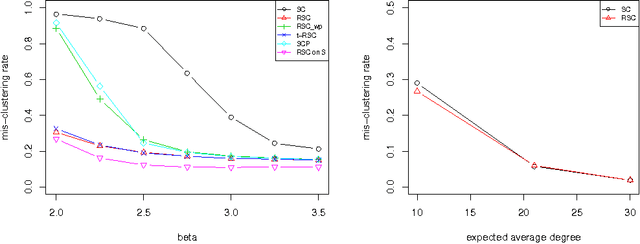Regularized Spectral Clustering under the Degree-Corrected Stochastic Blockmodel
Paper and Code
Sep 16, 2013

Spectral clustering is a fast and popular algorithm for finding clusters in networks. Recently, Chaudhuri et al. (2012) and Amini et al.(2012) proposed inspired variations on the algorithm that artificially inflate the node degrees for improved statistical performance. The current paper extends the previous statistical estimation results to the more canonical spectral clustering algorithm in a way that removes any assumption on the minimum degree and provides guidance on the choice of the tuning parameter. Moreover, our results show how the "star shape" in the eigenvectors--a common feature of empirical networks--can be explained by the Degree-Corrected Stochastic Blockmodel and the Extended Planted Partition model, two statistical models that allow for highly heterogeneous degrees. Throughout, the paper characterizes and justifies several of the variations of the spectral clustering algorithm in terms of these models.
 Add to Chrome
Add to Chrome Add to Firefox
Add to Firefox Add to Edge
Add to Edge